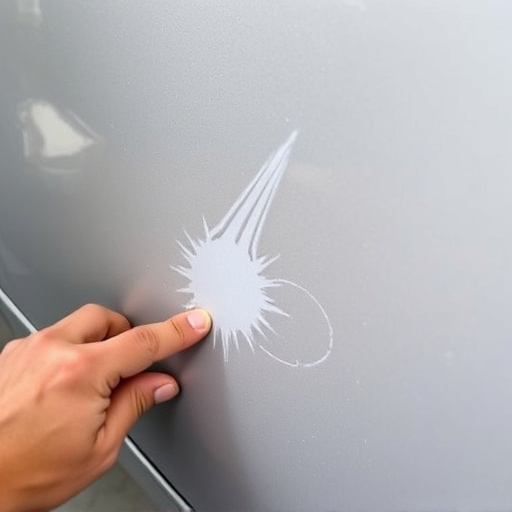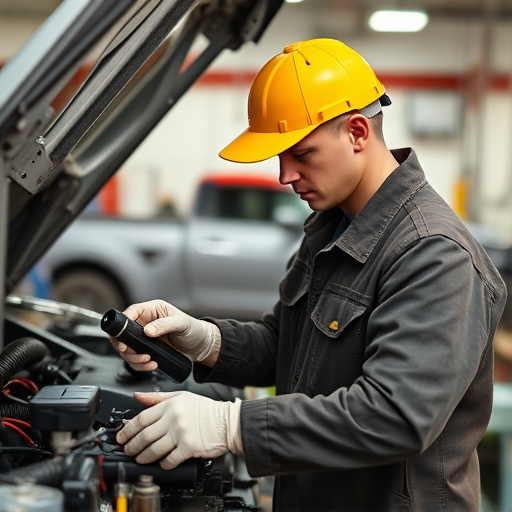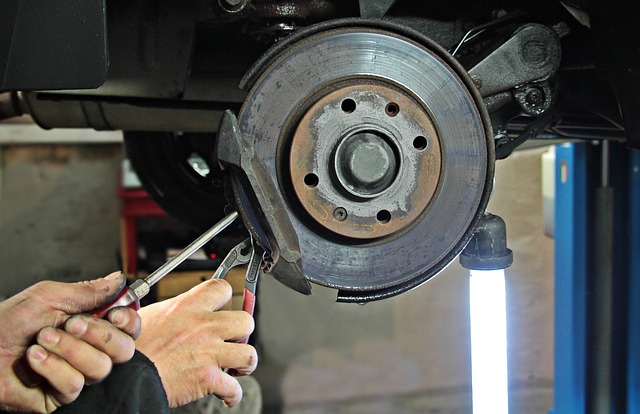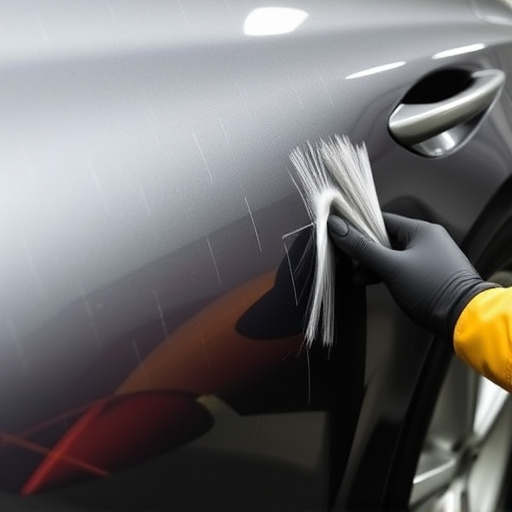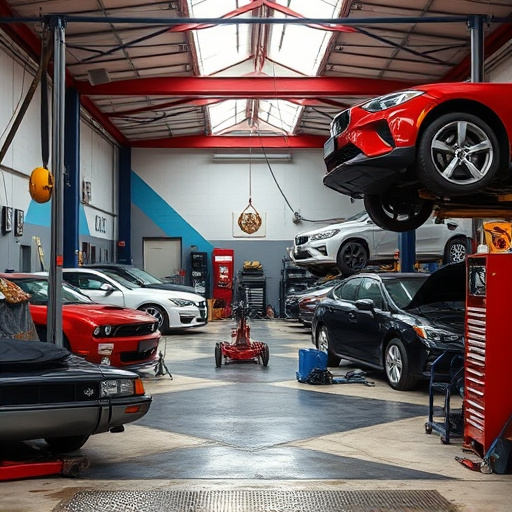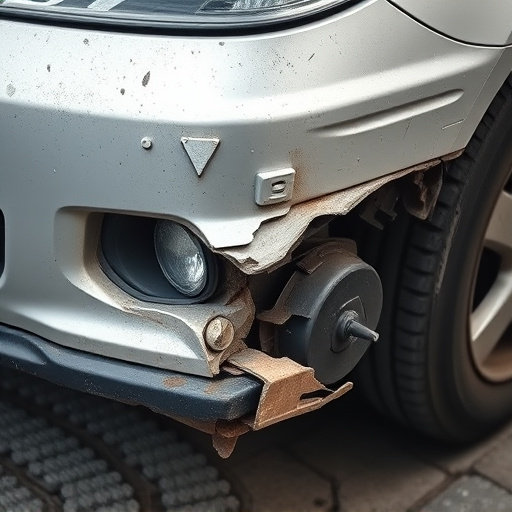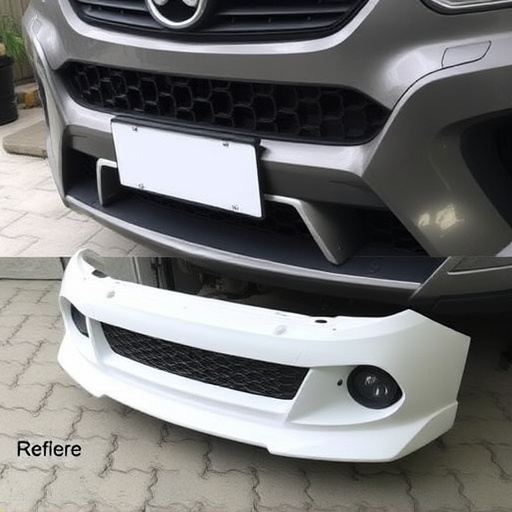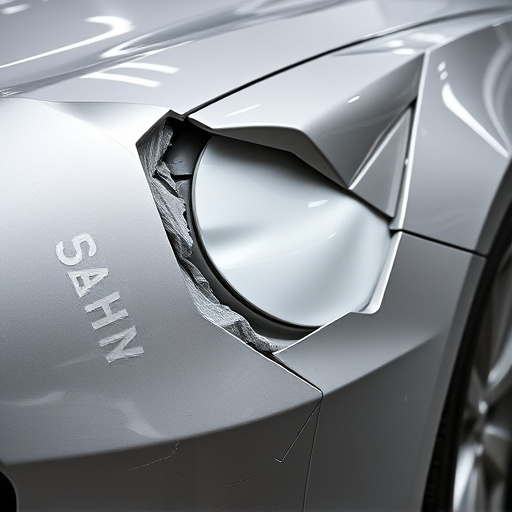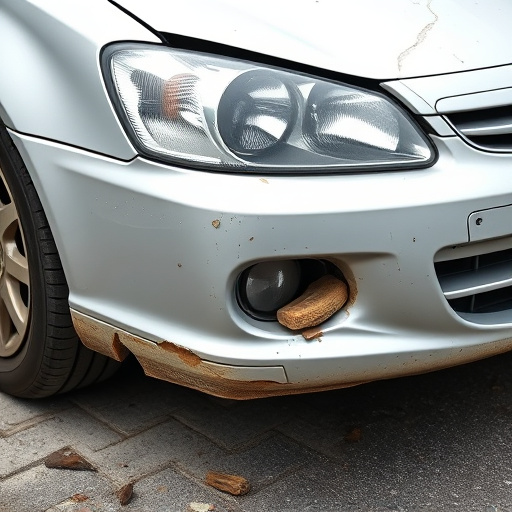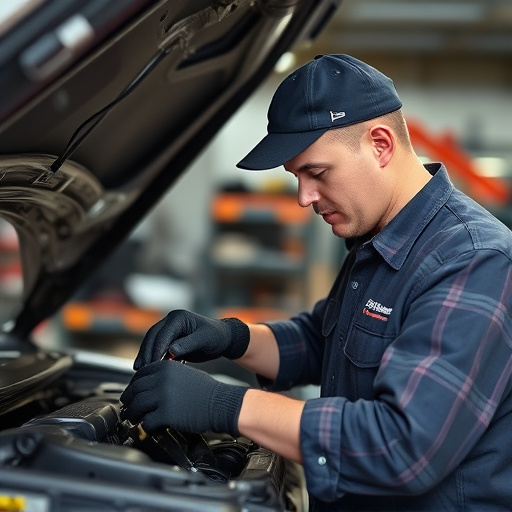Plastic body part repair, influenced by automotive technology advancements, offers specialized methods like injection molding and adhesive bonding to rejuvenate damaged plastic components, preserving structural integrity and aesthetic value for classic cars. It addresses compromise in modern vehicles' lightweight plastic parts, enhancing safety with paintless dent repair techniques. Global regulatory bodies drive industry evolution, focusing on safety standards and sustainable practices with advanced materials and digital technology.
Plastic body part repair is transforming the automotive industry, offering a sustainable solution for vehicle damage. This article delves into the intricacies of this emerging technique, exploring its impact on vehicle safety. We examine advanced repair methods, their effect on structural integrity and safety features, and the evolving regulatory landscape. Understanding these aspects is crucial as plastic repairs gain traction, promising not only cost savings but also enhanced environmental stewardship without compromising safety standards.
- Understanding Plastic Body Part Repair Techniques
- Impact on Vehicle Structure Integrity and Safety Features
- Regulatory Considerations and Future Trends in Plastic Repairs
Understanding Plastic Body Part Repair Techniques

Plastic body part repair is a specialized technique that involves restoring damaged or deteriorated plastic components on vehicles. Unlike traditional metal repairs, which often require welding or replacement, plastic repairs focus on rejuvenating the surface to its original condition. This process typically includes methods like injection molding, thermal forming, and adhesive bonding, each tailored to different types of plastic and damage levels.
The advancement in automotive technology has made modern cars more susceptible to plastic degradation due to factors such as UV exposure, temperature fluctuations, and impact damages. As a result, car scratch repair and automotive restoration have become increasingly important, especially for classic car owners who seek to preserve the original aesthetic of their vehicles. By employing expert techniques, professionals can enhance safety by restoring structural integrity, ensuring seamless fit, and maintaining the vehicle’s overall performance.
Impact on Vehicle Structure Integrity and Safety Features

The integrity of a vehicle’s structure is paramount for safety. Traditional metal body panels, while robust, have been replaced or augmented with plastic components in many modern vehicles due to their lightweight properties and fuel efficiency benefits. However, when these plastic body parts are damaged – from minor dents to significant crumple zones – the structural integrity can be compromised, impacting overall vehicle safety.
Plastic body part repair, especially techniques like paintless dent repair (PDR), offers a solution to maintain or even enhance structural integrity. Skilled auto body shops employ PDR methods that carefully extract dents without damaging surrounding panels, preserving original factory finishes and crucial safety features incorporated into plastic components. This not only conserves materials but also ensures the vehicle retains its structural strength, providing drivers with the maximum level of protection in the event of an accident.
Regulatory Considerations and Future Trends in Plastic Repairs

The evolution of plastic body part repair technologies is not just a matter of innovation; it’s also heavily influenced by regulatory bodies worldwide. Safety standards play a pivotal role in dictating how these repairs are conducted, ensuring vehicles maintain their structural integrity and protect occupants in vehicle collisions. As technology advances, regulatory considerations must adapt to accommodate new methods like advanced plastic bonding techniques and 3D printing for exact replicates of original parts.
Looking ahead, the future of plastic repairs in the automotive repair sector appears promising yet challenging. There’s a growing trend towards more sustainable practices, with regulations encouraging the use of eco-friendly materials and recycling processes. Additionally, advancements in digital technology are paving the way for precise measurements and virtual design, revolutionizing vehicle collision repair. These trends signal a shift towards efficient, safe, and environmentally conscious plastic body part repairs, shaping the automotive repair industry’s trajectory.
Plastic body part repair has emerged as a game-changer in the automotive industry, offering sustainable and cost-effective solutions for vehicle damage. As these innovative techniques gain traction, they significantly enhance safety by maintaining structural integrity while preserving key safety features. With regulatory bodies acknowledging their benefits, future trends suggest wider adoption, making plastic repairs an integral part of modern vehicle maintenance and ensuring safer, greener roads ahead.



